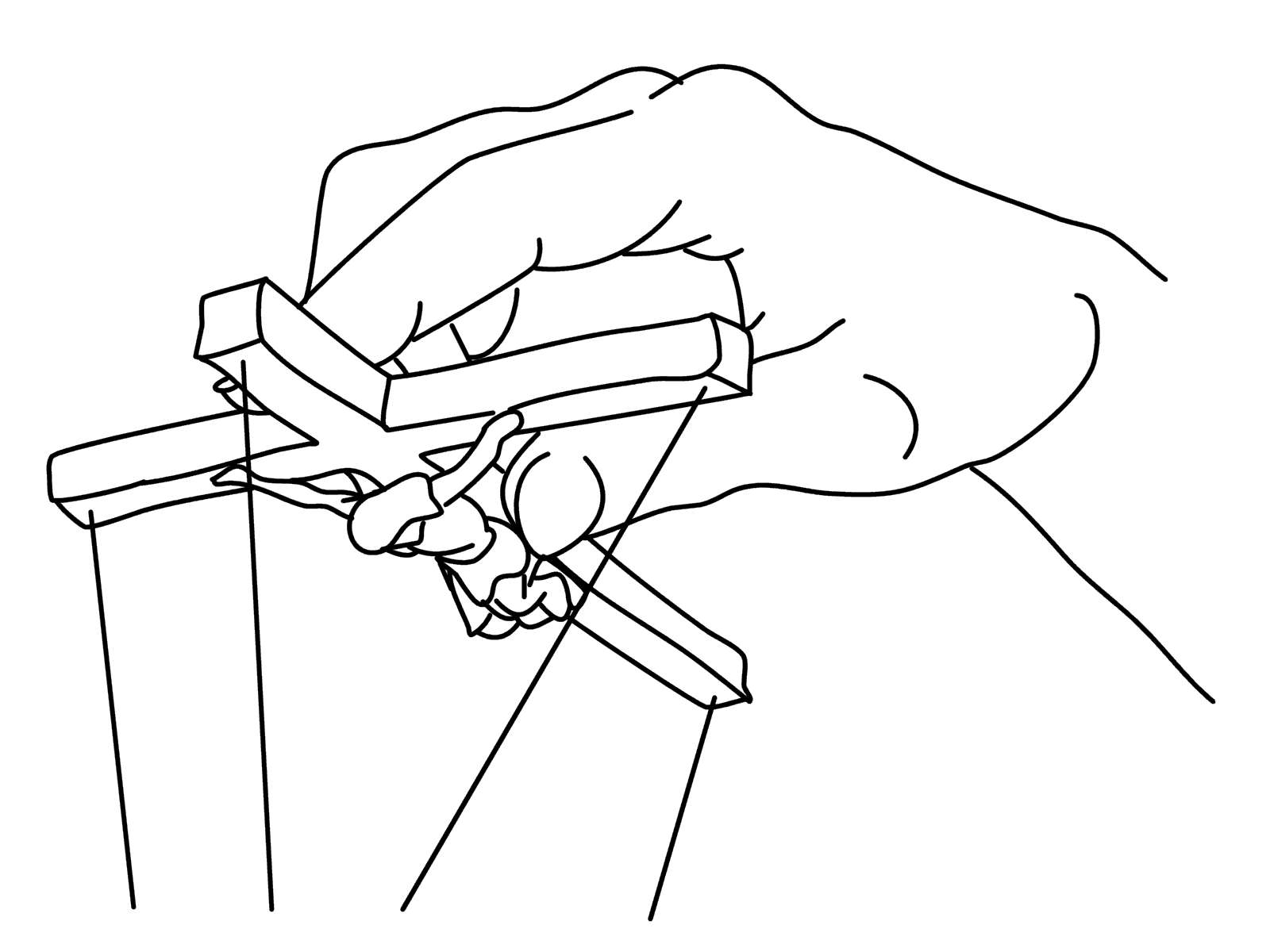The Wives of Gilead: Not Quite the Puppet
While reading Watchmen, Dr. Manhattan’s statement “We’re all puppets…I’m just a puppet who can see the strings,” reminded me of A Handmaid’s Tale, because the citizens of Gilead themselves form puppets. I believe that The Puppet serves as Gilead’s tool, possibly its most important piece of technology. The hand (possibly Gilead’s strict religious code?) carefully controls the puppets actions and the puppet in turn carries out a purpose: it keeps up the performance that is Gilead, it allows for the “show” of society to run so that Gilead can exist. For the purpose of this paper, I wanted to explore the idea that in the book and film, the Handmaids can serve as both the strings and the puppet, but that they can also alternate and share these roles with their Commanders, creating the Wives’ (who are stuck as strings) resentment towards them, and more importantly, creating their dystopic desire to become the puppets themselves and willingly participate in empty performances which in the end changes nothing.
Atwood’s novel frequently portrays the Handmaid’s as the puppet: when the Japanese tourists asked Offred and Ofglen whether they were happy, Offred answers “Yes, we are very happy,” later admitting, “What else [could] I say?”(Atwood, 28). Offred puts on a performance for the tourists, following the tugs of her strings as she lies in order to save face for Gilead. Similarly, in the scene where Ofwarren displays her pregnancy Atwood writes: “There is a shifting in the room…despite ourselves we turn our heads…” (26). Ofwarren performs her pregnancy for the Handmaids; again, an empty performance for the baby is not hers. The film furthermore emphasizes the praise given to Ofwarren in the presence of her commander’s Wife, as the Handmaid’s clap for the success of Ofwarren’s programmed duty, while all the Wife can do as Ofwarren’s strings is lead her back into the car, since one does not attend a puppets how to focus on its strings. Finally, another key performance for the Handmaids is the Salvaging: “Most [of the wives and daughters stay] but they stay behind, out of the way, they merely watch” (277). Again, the wives cannot participate in a performance, but must instead share the strings with Aunt Lydia, as she orders the Handmaids to attack (an order really given by the hand manipulating the strings). Additionally, Ofglen makes the mechanical aspect of the puppet, string and hand coupling apparent, for just like with any machine that goes against its programming, she runs to render the man within the circle unconscious, resulting in consequences.
Yet the Handmaids can serve as the strings as well. While their ability to switch does not grant them “power” (no Commander, Wife, or Handmaid truly has that, as I explain later), but it is an ability that the Wives, nonetheless do not posses and leaves room for resentment. For example, when Offred visits the Doctor, he offers his services to help her have a child, thus putting on the performance of a savior, a rescuer—even if it is off script, like a virus infecting a system, it still remains empty: not only is he approaching the sex as a duty, but there is also the risk of him blackmailing afterwards, as Serena Joy later cautions (well aware that she shares her strings). Regardless, Offred becomes the strings of the puppet machine—she can either join the doctor off script and draw him in to make good on his offer, or she can give into the hand controlling the marionette, and as the strings, push the doctor away. In choosing the latter option, the Doctor has no choice but to retract his offer as his strings pull him away from Offred.
Throughout the novel and even the film, the Wives further maintain a strained relationship with their Handmaid’s due to the Handmaid and the Commander’s switching and/or sharing the roles within the puppet machine—they are partners in a mechanical dance. The Ceremony makes puppets out of both Offred and The Commander as they go about their programmed duty, giving an empty performance, especially the Commander with his high chance of sterility and Offred’s description: “ [he was] like a man humming to himself in the shower without knowing he’s humming…a man [with] other things on his mind.”(94). The Handmaid and The Commander share a role, burdening Serena Joy with both of their strings: she must hold on to Offred while watching the scene before her, especially the Commander. Offred later emphasizes Serena Joy’s role, admitting “The Commander could give me away so easily, by a look, by a gesture.”(162) and the film illustrates this outcome as Commander attempts to touch Offred and Serena Joy stops him. If she, as the strings is operating one way she would very well notice the puppet operating a different way. Furthermore, Offred and the commander’s clandestine relationship alternates the roles of the puppet machine—Offred as the strings draws the Commander to her with her scrabble skills and kisses while his enticement gives a performance—an admittedly a sad one (140). The Commander as the strings draws her in with the promise of lotion and magazines, and her delight serves as a performance to him. When Serena Joy finds out about their affair, she is upset by the Commander’s unfaithfulness, but what she envies in this “cheating” is the dance—no matter how mechanical— the two shared: the switching off, their ability to move within the machine while she remains fixed.
The Wives are indeed similar to Dr. Manhattan—they can see the strings because they are aware of their role. In the film, Serena Joy tells the Commander: “Life is so much easier for you when I am [happy].” Her strings are tangled around the Commander’s puppet, resulting in his performance of making her happy, an empty performance to go along with an empty happiness for how truly happy are these Wives? Their crowning moments stem from falling ill (because it “adds interest to their lives,”(154) and after the birthing process where they are left to cluck amongst themselves. The wives in both cases, surrounded only by themselves, make up a mass of puppet-less strings that cannot put on a show, or draw attention. Their fueling of the dystopia that is Gilead really takes root in fact that that their need to change from one part of the machine, to another would result in no change at all—just as Dr. Manhattan observed. Any form of power or even partial submissiveness within the machine, whether one is the strings, or the puppet is an illusion, for regardless, there is still the hand moving both the strings and the puppet. A hand ready to delete the source of trouble, to string up a new puppet if need be. They all continue as cogs in the machine, upholding a world of utter despair.
Works Cited
Atwood, Margaret. The Handmaid’s Tale. New York, NY: Anchor Books, 1986.
Gibbon, Dave and Alan Moore. Watchmen. New York, NY: DC Comics, 1986-1987.


